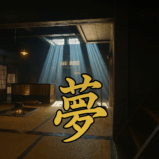Visited: April 29, 2025
Starting from Hankyu Ōyamazaki Station
I got off at Hankyu Ōyamazaki Station,
and from here, I headed uphill toward the Asahi Beer Oyamazaki Villa Museum of Art.
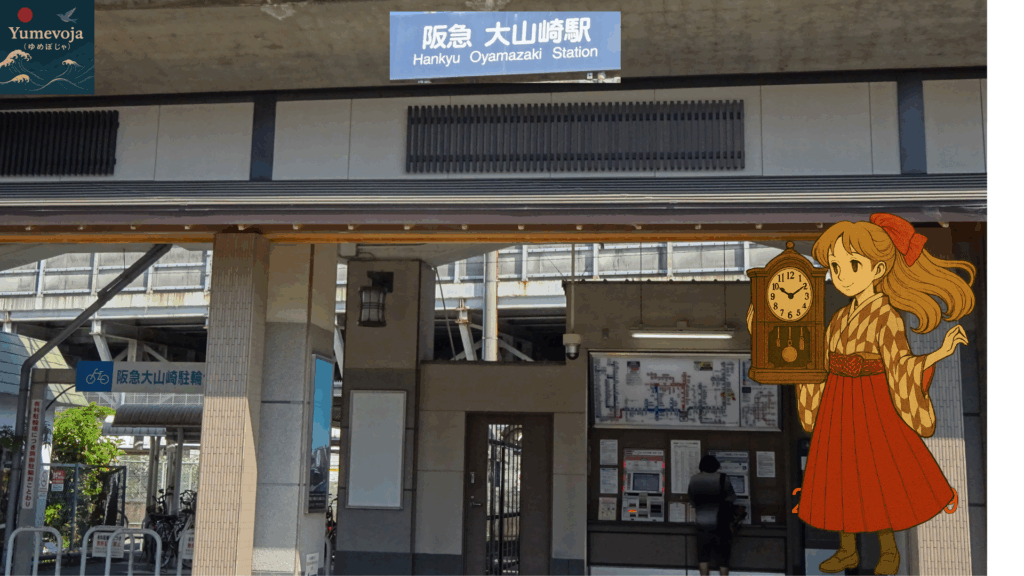
Hankyu Ōyamazaki Station — the journey begins in a quiet residential neighborhood.
Climbing the slope.
It takes about ten minutes on foot from the station.
The slope is steeper than I expected, and I soon found myself out of breath.
Yet with every step, my excitement grew — wondering what kind of world awaited beyond the hill.
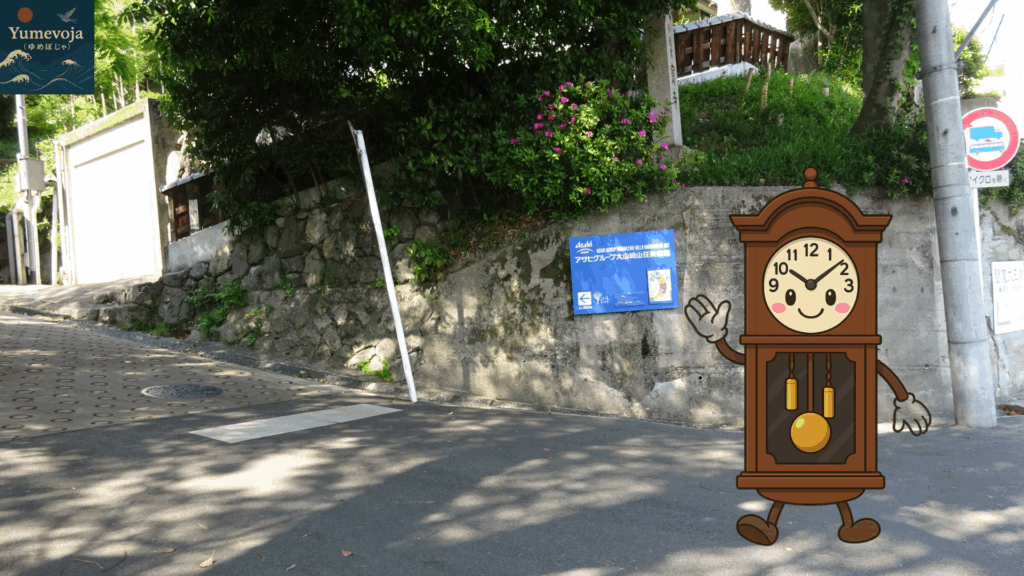
A steeper slope than I imagined — I couldn’t wait to reach the top.
To the Ōyamazaki Villa Museum of Art
Finally, I arrived.
A stately gate and a tranquil garden welcomed me.
Photography wasn’t allowed inside, but even from the outside, I could feel the atmosphere of this remarkable place.
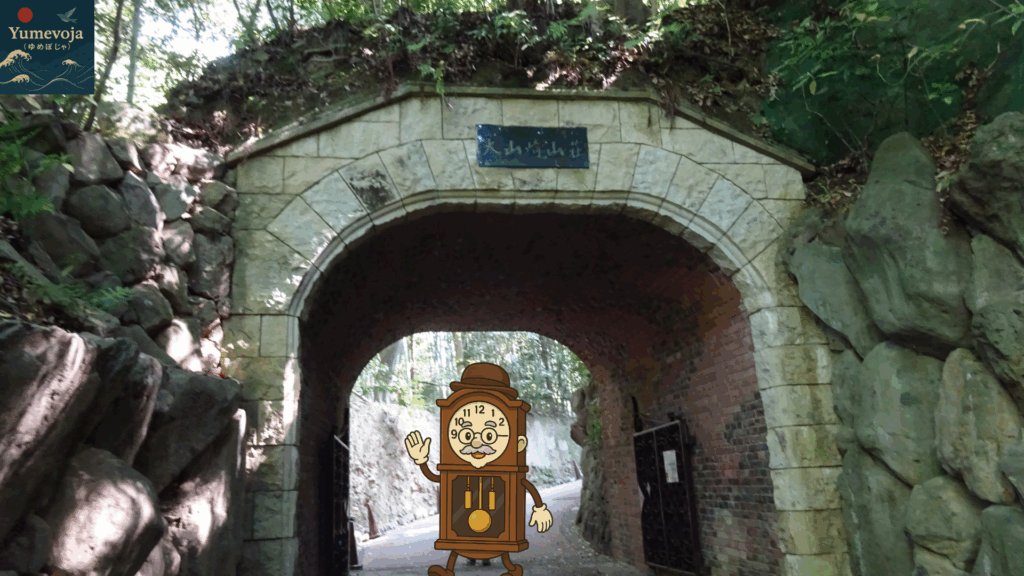
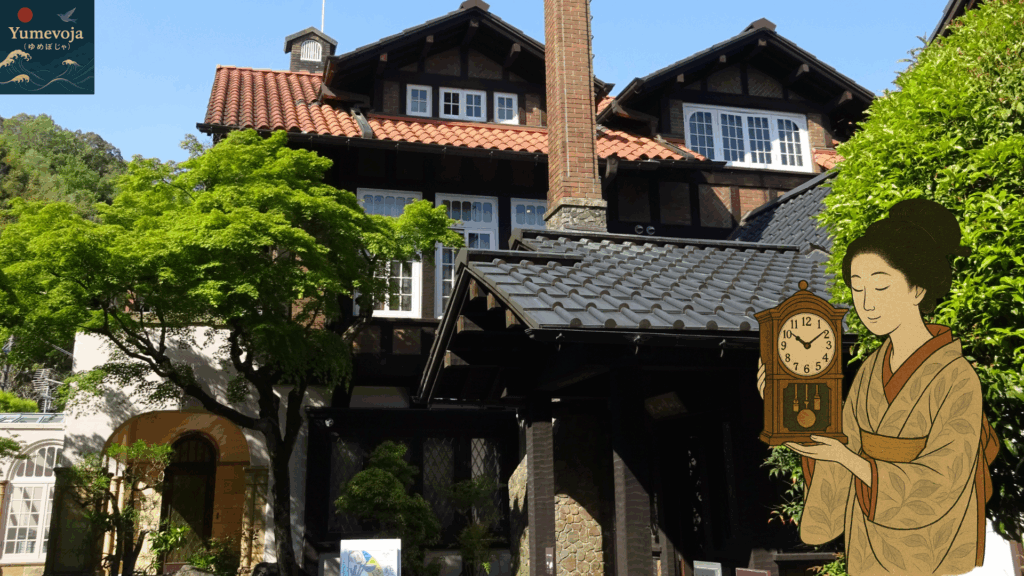
The entrance of the Oyamazaki Villa Museum of Art — even the exterior alone has a commanding presence.
Along the path leading to the entrance,
there is a small hut with free lockers for large bags.
The museum itself has no lockers, so it’s best to leave your belongings there before entering.
This villa was built by Shotaro Kaga, an entrepreneur from the Taishō era.
Fascinated by Western culture, he spared no expense in constructing this grand residence.
As I walked through the rooms, I felt not so much a sense of tranquility,
but rather an aura of wealth and ambition that still lingers in the air.
After the Kaga family gave up the property,
the building was left abandoned for many years, falling into near ruin.
There were even rumors that it might be demolished,
until the Suntory Foundation for the Arts stepped in to preserve it.
Today, the site is managed by Asahi Breweries — once a rival company of Suntory.
A place protected beyond corporate boundaries,
it carries a truly fascinating history dedicated to art.

The garden’s stillness — it felt as if the air itself had remained untouched for a hundred years.
From grandeur to decay — and then to revival.
This flow embodies the very essence of the rise and fall of fortune.
The Oyamazaki Villa is not merely beautiful; it reflects both the light and shadow of its time.
Next stop — Uji.
My next destination was Uji — a place filled with memories of my father.
I had hoped to enjoy a bowl of chilled matcha zenzai at Fukujuen, where we once shared tea together.
But by the time I arrived, the café had already closed. Sadly, I was too late.

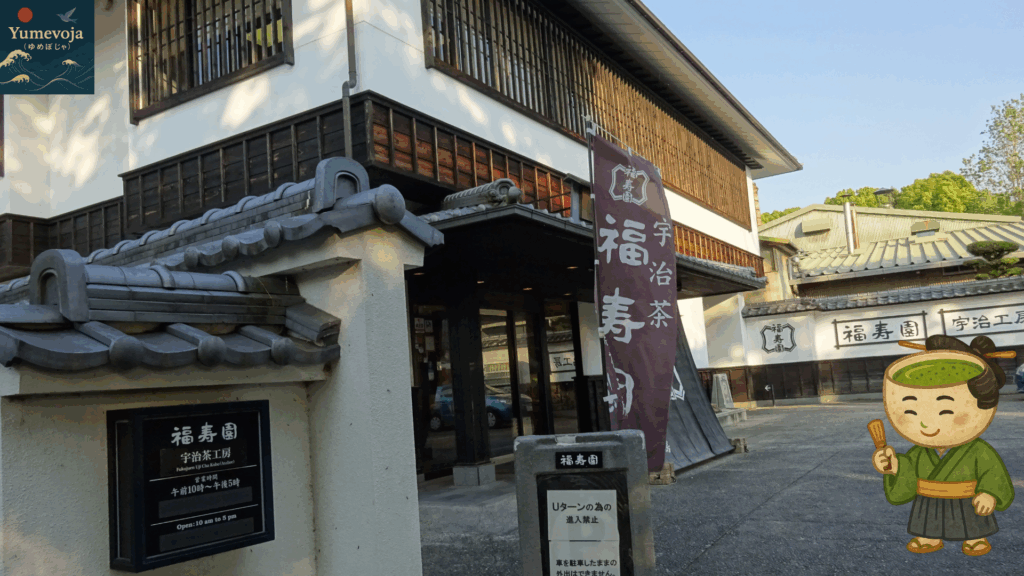
Fukujuen — a place of memories with my father.
This time, I didn’t make it in time.
My father was from Kyoto, and after my mother passed away,
I often took short trips with him to lift his spirits.
One of those journeys led us to Fukujuen,
where we shared a bowl of chilled matcha zenzai —
a memory that still warms my heart today.
This time, I couldn’t go inside,
but Fukujuen remains a special place I always remember whenever I visit Uji.
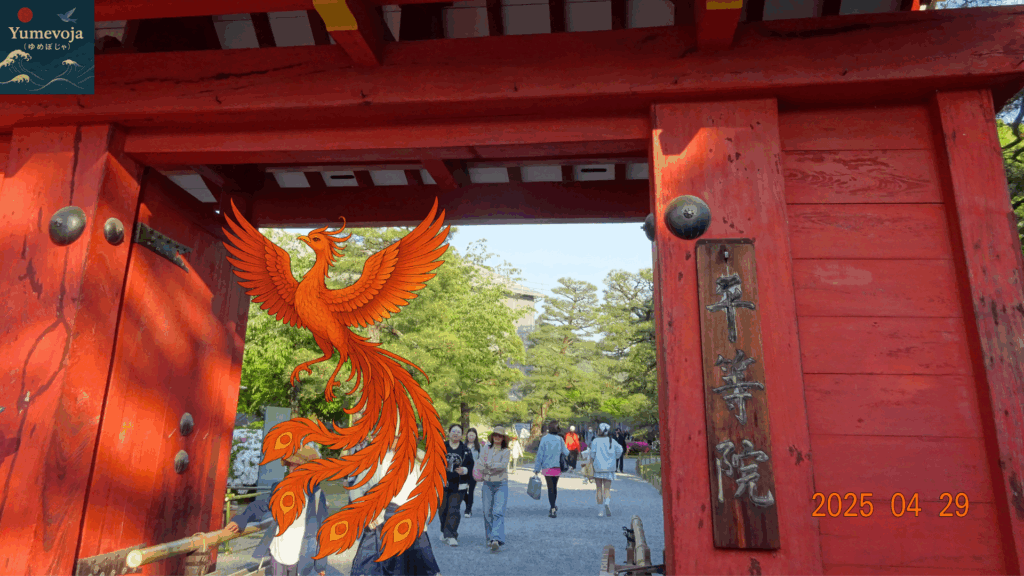
I pulled myself together and headed to Byōdō-in Hōō-dō, only to find that visiting hours were over.
All I could do was take in the quiet stillness of the evening.
The Hō-ō (phoenix) of Byōdō-in originates from Chinese mythology —
a sacred bird symbolizing peace and prosperity.
It is said to appear only in times of harmony,
a messenger of good fortune.
In contrast, the Western phoenix represents rebirth —
a bird that dies in flames and rises again from its ashes.
In the East, the phoenix embodies peace;
in the West, it stands for renewal.
Two similar symbols, born from very different cultures.
I couldn’t see the Hō-ō itself,
but as I stood outside the gate watching the flow of people,
I realized that “a journey of imagining the unseen”
has its own quiet charm.
Dinner at Odaidokoro Roji
Thinking to myself, “Nothing seems to go on time today,”
I turned to AI for help and found a restaurant called Roji.
In its calm, cozy atmosphere, I chose a duck dish — something warm and comforting to end the day.
The dish reminded me of my father, who loved duck.
As I ate, it felt almost as if we were sharing the meal together again.
The kamo rōsu — roasted duck — was exceptional,
and with its reasonable price, it made for a deeply satisfying dinner.
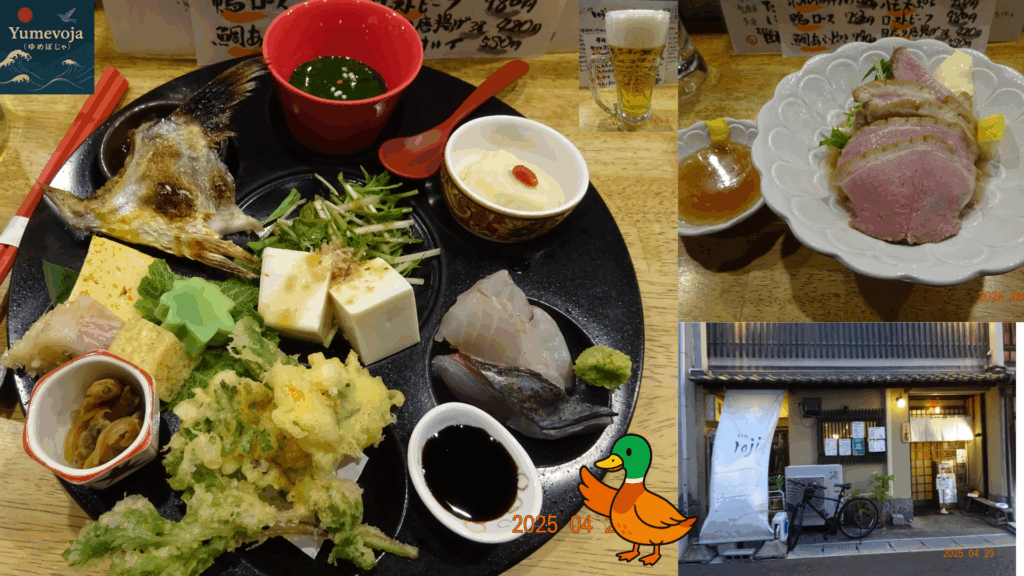
The roasted duck and the surprisingly generous Choi-nomi Set
brought back memories of my father.
It was a quietly heartwarming moment —
a simple meal that touched something deep inside.
📎 Related Posts
Click to read more:
👉 🍵Beauty & Taste (Osaka – Kyoto) ③/ ③Ōyamazaki & Uji -Duck Roast and the Luxurious “Choi-Nomi” Set | YUMEVOJA
Rise, Fall, and Reunion at Night
Japan is home to many long-established businesses that have endured since the Edo period,
but preserving tradition is never easy.
The Oyamazaki Villa faced the same fate — once a symbol of prosperity,
it nearly fell into ruin before being revived through the dedication of those who chose to protect it.
Standing in its quiet garden, you can almost feel not only the beauty of the architecture,
but also the weight of the struggle behind keeping such heritage alive.
At Oyamazaki Villa, I witnessed the rise and fall of time itself—
and in Uji, I felt a quiet moment that felt like a reunion with my father.
Though my unplanned journey often made me miss the places I wanted to visit,
it led me instead to beautiful moments of serendipity —
the quiet “spaces in between” that stay in the heart long after the trip ends.
Even when things don’t go as planned,
a journey has its own way of becoming richer in unexpected ways.
The journey isn’t over yet.
Next stop — the mystical Senbon Torii of Fushimi Inari Shrine at night.
👉 In [Stopover Journey ④: The Night of a Thousand Torii],
you can find the full itinerary of this day, complete with a timeline and Google Map.
📎 Related Posts
Click to read more:
👉 🚉Stopover Journey (Osaka – Kyoto) ① / ④ Takatsuki- A Fort Walk and a Chance Encounter with the ‘Crying Sumo’ |YUMEVOJA
👉 🚉Stopover Journey (Osaka – Kyoto) ④/④ Night at the Thousand Torii Gates – YUMEVOJA

Today’s bonus capsule!
✨ Gateway to the Showa Era-The Watch
The Showa era (1926–1989) was a time when modern technology and ideas began to transform everyday life in Japan.
🕰️Memories of Showa
Watches in the Showa era were thick and heavy, full of presence.
I still remember the day I received my very first wristwatch as a gift for entering junior high school.
It felt like I had taken one small step closer to becoming an adult.
Because it was a celebration, my parents chose something of good quality.
Back then, a watch wasn’t just a tool—it was a symbol of growing up.
🌐 Today
Now, all we need to do is glance at our smartphones to know the exact time.
It’s accurate and convenient, but the feeling of wearing time has faded.
The quiet ticking of the second hand has been replaced by the soft glow of a screen,
and perhaps, somewhere along the way, we’ve lost the moments when we truly felt time passing.
In our pursuit of efficiency, we may have forgotten how to simply savor time itself.
🌍 Across the World
The craft of watchmaking was born and refined in Europe.
Japan learned from that tradition, improving and innovating with deep respect.
The principle of the quartz movement—using the vibration of crystal—was discovered abroad,
but it was Japan that first transformed it into a practical wristwatch.
Seiko introduced the first model to the world, marking a turning point in watchmaking history.
Through relentless refinement—what some might call “creative modification”—
Japan forged a reputation for precision and reliability that endures to this day.
💭 Reflection
Inside the Asahi Group Ōyamazaki Sansō Museum of Art,
various clocks quietly mark the passing of time.
Among them, a large hall clock—if I remember correctly, Scottish-made—
seemed to gently welcome me as I entered.
In that moment, I felt as though time itself had turned back.
The sound of its pendulum still echoes faintly in my memory,
even though the exact spot has faded from recollection.
It reminded me that knowing the time and feeling the time are not the same.
In a world that prizes speed and efficiency,
I sometimes long to reclaim a bit of that gentle, lingering flow of time from the Showa days.
